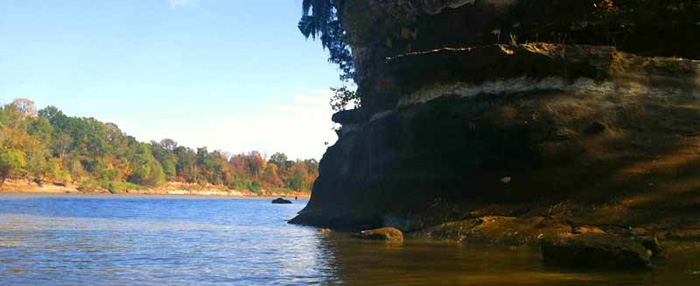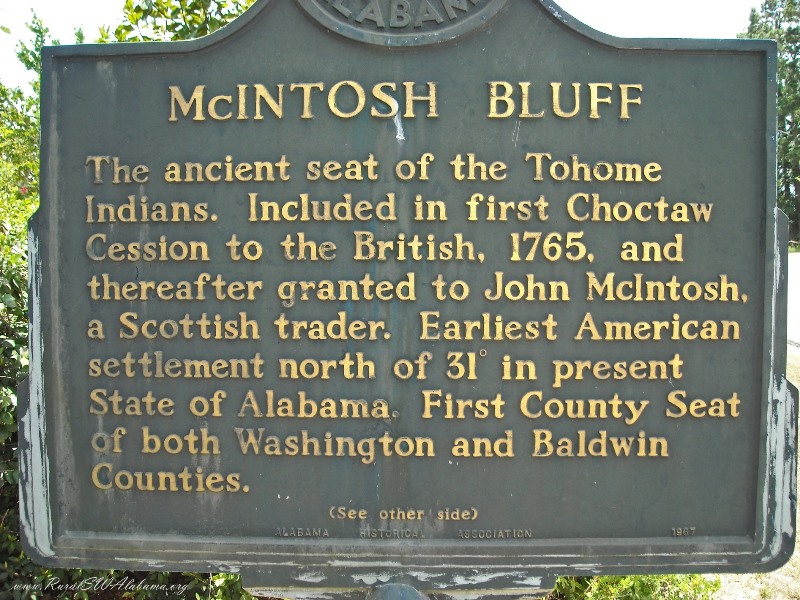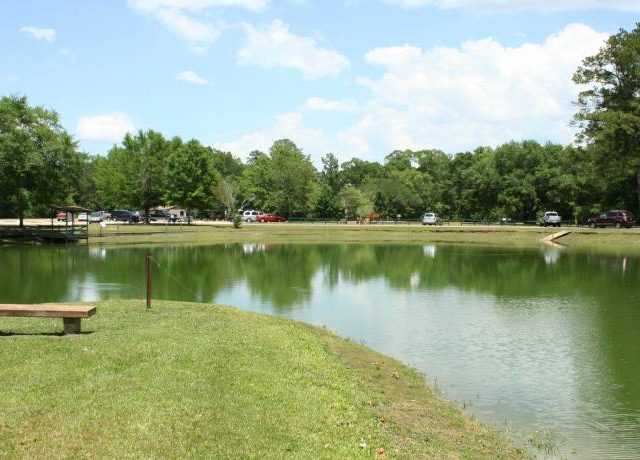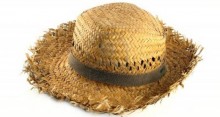The early immigrants of Clarke, Washington and Baldwin counties in Alabama arrived as early as 1745 from SC and Georgia
Clarke, Washington and Baldwin immigrants came from South Carolina and Georgia
“Meek says: “As early as the Revolution, large bodies of unfortunate adherents of the British cause had fled from South Carolina and Georgia, through the dense and pathless forests between, to the shores of the Tombeckbee and Mobile Bay. They laid the first foundations of American inhabitancy in the counties of Clarke, Washington and Baldwin.” It is poetic to call these mighty forests “pathless;” but we should remember that from Carolina and Georgia traders had been coming for many years to all these Indian tribes.
As early as 1735 hundreds of pack-horses brought out from Charleston to the Chattahoochee and westward, merchandise for the Indians; and in 1745 Lachlan McGillivray married the beautiful Creek Indian girl, Sehoy Marchand, and settled with her and established a trading house on the Coosa, four miles above where now stands Wetumpka. And Bartram, the botanist, found in 1777 the road from Tensaw, near the present Stockton, up to the Tallapoosa, narrow, but ‘well beaten’ Wagon roads were not; but trails for packhorses were, before the Revolutionary War, will trodden through all those mighty forests.
Before, however, many settlers of any class had trodden Indian trails and reached the Tombeckbee, (Tombigbee) West Florida changed rulers. The Spaniards captured the forts and took possession in 1780, except of Pensacola, which they took early in 1781, and in 1783, in January, Great Britain confirmed to Spain, by treaty, all the province of East Florida. But Great Britain had previously, in the preliminary Treaty of Paris, in 1782, acknowledged the independence of the United States, and recognized the Southern boundary to be the line of 31 degrees north latitude, from the Mississippi River to the Chattahoochee down the Chattahoochee to the mouth of the Flint, from that point east to the St. Mary’s river, and down that river to the sea.
Spain claimed possession
A conflict of claims of course arose. Spain claimed by conquest and treaty, and held by possession, as far north as 32°28′, or all the former British province of West Florida. Thus at the close of the War of the Revolution, when there was existing in the Carolinas an Georgia so much ill-feeling toward the royalist, to whom the Whigs, so-called, attributed very much of their suffering, these distant Tombeckbee settlements, under Spanish rule, afforded still to the royalists a secure retreat. Many, therefore, came and settled upon Spanish grants, or opened plantations along the river under Spanish rule.
The following names of some of these early settlers have been rescued from oblivion: Below McIntosh’s Bluff, Bates, Lawrence, Powell; above, on the river, Danley, Wheat, Johnson, McGrew, Hacket, Freeland, Talley and Baker. These were found as settlers in 1791 by a small company of new settlers, whose names were Thomas Kimbil, John Barnett, Robert Sheffield, Barton Hannon, and three young men, brothers, by the name of Mounger. They arrived by way of Tensaw Lake, where they found residing families names Hall, Byrne, Mims, Killcreas;, Steadham, Easlie, and Linder1
Chief industry was indigo
The new settlers with their horses had crossed the creeks and the two rivers upon rafts. The horses had brought upon their backs some plows and axes. They found St. Stephens garrisoned by one Spanish company, under the command of Captain Fernando Lisors. The Choctaws called St. Stephens Hobuckintopa. At this time the commandant’s residence, the Catholic church and the block—house, were good ‘frame-work’ buildings, made tight with ‘clay and plaster.” Cypress bark covered the other houses, some of which were large. Some French farmers, then living on the rivers, dwelt in clay huts, while the Americans built pole-cabins.
The chief industry here seems to have been raising indigo, then worth two dollars and a half a pound. Further down the river the Spaniards made quite a business of burning pine to collect tar.
1Captain John Linder was a native of Switzerland, had been in Charleston as a British surveyor, and was aided by General McGillivray to settle with his family and a large number of colored servants at the Tensaw lake during the War of the Revolution. Part of the settlers at this time were royalists and part were whigs.
SOURCES
- TRANSCRIBED FROM EARLY IMMIGRANTS to SOUTH ALABAMA (From: The Great Southeast or Clarke County and its Surroundings, pub. 1882 by Rev. T. H. Ball)
ALABAMA FOOTPRINTS – Settlement:: Lost & Forgotten Stories (Volume 2)
Alabama Footprints: Settlement is a collection of lost and forgotten stories of the first surveyors, traders, and early settlements of what would become the future state of Alabama.
Read about:
- A Russian princess settling in early Alabama
- How the early settlers traveled to Alabama and the risks they took
- A ruse that saved immigrants lives while traveling through Native American Territory
- Alliances formed with the Native Americans
- How an independent republic, separate from the United States was almost formed in Alabama








Beautiful!!
Loved the article. My father’s family lived in st. Clair or maybe Clark county, but in the mid 1800’s. I wish I could find some info about them.